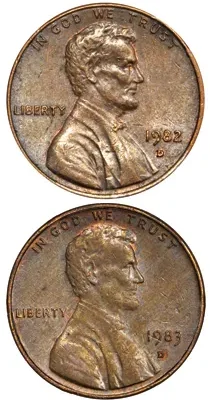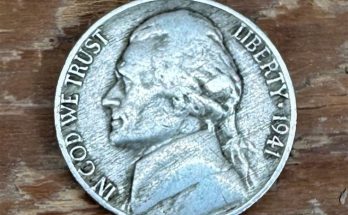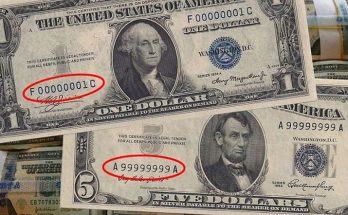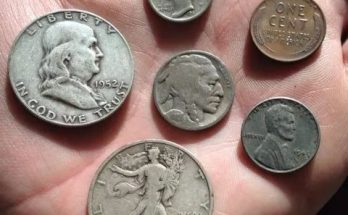Two unique coins that cost the finders face value were sold for a combined total of nearly $36,000. That’s a tidy profit on a two-cent investment.
Both the copper 1982-D Small Date cent and the copper 1983-D Lincoln cent sold at Stack’s Bowers Galleries “Rarities Night” auction at the American Numismatic Association World’s Fair of Money Aug. 3.
Neither coin should exist in copper alloy, but collectors looking for coin finds discovered both. Then they cashed in by consigning them for auction.
The two coins achieved a combined price of $35,625. The 1982-D sold for $18,800 and the 1983-D sold for $17,625. That’s not a bad profit for two Lincolns pulled from circulation at face value by the finders!
Both coins were won by Internet bidders.
I first broke the news of the existence of these transitional errors in Numismatic News when they were discovered, but all I could do was speculate as to what their values might be based on sales of the more common though rare 1983 copper cents.
Both the 1982-D Small Date and 1983-D offerings were struck on solid bronze planchets (actually brass but more often referred to as bronze) that weighed within tolerance of the 3.11 bronze planchets phased out by the Mint in the earlier part of 1982. They should have been struck on copper-plated zinc planchets that weigh 2.5 grams.
The most recent of the two discoveries was the 1982-D Small Date found by Paul Malone of Minnesota and reported by me in January of this year.
He found it on Nov. 23, 2016, while searching for pure copper alloy cents to squirrel away for their melt value. He knew that he had to weigh all the 1982-dated cents to segregate the solid bronze keepers from the copper-plated zincs of that transitional year when both types of planchets were struck.
Until his discovery, no 1982-D Small Date cents were known on the solid copper alloy planchets.
Nonetheless, Malone decided to weigh his examples of the 1982-D Small Dates anyway to see if he might find an error.
The Denver Mint had made a concerted effort to make sure none of the Small Date variety was struck in the solid copper alloy – and for 35 years, it appeared it had succeeded.
But obviously at least one got struck as such in error, and Malone found it! His coin was offered as Lot 2031, described as a “1982-D Lincoln Cent. Small Date–Struck on a Bronze Planchet – AU-58 BN (NGC). 3.08 grams.”
The 1983-D copper cent was found by Jeff Young of Ohio after he read a copy of my book (co-authored by Dr. Brian Allen), Strike It Rich With Pocket Change, where I had added in a footnote under the then-unique 1983 solid copper cent that this error could just as well exist on a Denver issue of the same year, and I encouraged readers to look.
Young started weighing both Philadelphia and Denver issues and in short order found the 1983-D. I broke the news on his discovery in a January 2013 issue of Numismatic News. Young decided to put his coin up for auction after he heard that the 1982-D Small Date copper cent was being put up for auction. He felt the pair would attract more attention than a single coin and that it was as good a time as any to sell. The firm offered his coin as Lot 2032 described as: “1983-D Lincoln Cent – Struck on a Bronze Planchet – AU-55 (PCGS). 3.10 grams.”
As a specialist in the error-variety field since 1979, there is one thing I’ve learned: Where there is one error, there is usually more.
I encourage readers to check their 1982-D Small Date and both Philadelphia and Denver Mint 1983 issues for any that weigh in at, or close to, 3.11 grams. (Click here for visual guide.) For that matter, it wouldn’t hurt to check the weight of all the San Francisco proof cents for both years. A rare transitional could be lurking there, too!
For the 1982-S, look for one that weighs 2.5 grams, as all currently known weigh 3.11 grams struck in the traditional solid copper alloy with a Large Date. Look for a 1983-S that weighs 3.11 grams in the sold copper alloy, as all should have been struck on the 2.5 gram copper-plated zinc planchets.
Taking it one step further, depending on when the Mint ended production of the 1982-S proof cents, it is possible that a Small Date die could have been mistakenly processed as a proof die and used to strike proof cents. In 1998 and 1999, a few business-strike style reverse dies (with the “Close AM” of AMERICA) were mistakenly processed as proof dies and used. The same kind of mix-up could have happened on the proof 1982-S cent obverse dies, though I’d bet less likely. Still, you have to look at the date anyway, so just pay close attention to its size and location.
The date, the motto IN GOD WE TRUST and LIBERTY are more delicate and further from the rim on the 1982 Small Dates than on the Large Dates; the best indicator that can be seen at a glance is the distance of the “2” of date from the rim. It will be much further from the rim on the Small Dates than on the Large Dates.
Readers, keep looking at your cents. The next find, and the profit that goes with it, might be yours.



